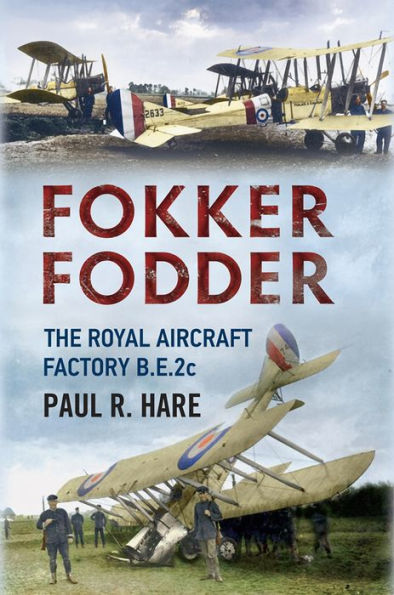Designed as the benchmark against which competitors in the 1912 Military Aeroplane Competition were judged, the B.E.2 outperformed them all and was put into production becoming the most numerous single type in Royal Flying Corps service. The B.E.2c, a later variant, was designed to be inherently stable and was nicknamed the 'Quirk' by its pilots. Intended mainly for reconnaissance, it was hopelessly outclassed by the Fokker Eindecker fighter and its defenceless crews quickly became known as 'Fokker Fodder'. The Eindecker, piloted by top scoring German aces such as Max Immelmann and Oswald Boelcke, made short work of the B.E.2c in the aerial bloodbath coined as the 'Fokker scourge'. Its vulnerability to fighter attack became plain back home and to the enemy who nicknamed the B.E.2c as kaltes fleisch or cold meat. British ace Albert Ball said that it was a 'bloody terrible aeroplane'. B.E.2c crews were butchered in increasing numbers. The B.E.2c slogged on throughout the war, and its poor performance against German fighters, and the failure to improve or replace it, caused great controversy in Britain. One MP attacked the B.E.2c and the Royal Aircraft Factory in the House of Commons stating that RFC pilots were being 'murdered than killed. ' This resulted in a judicial enquiry that cleared the factory and partly instrumental in bringing about the creation of the Royal Air Force.
1118001715
Fokker Fodder: The Royal Aircraft Factory B.E.2c
Designed as the benchmark against which competitors in the 1912 Military Aeroplane Competition were judged, the B.E.2 outperformed them all and was put into production becoming the most numerous single type in Royal Flying Corps service. The B.E.2c, a later variant, was designed to be inherently stable and was nicknamed the 'Quirk' by its pilots. Intended mainly for reconnaissance, it was hopelessly outclassed by the Fokker Eindecker fighter and its defenceless crews quickly became known as 'Fokker Fodder'. The Eindecker, piloted by top scoring German aces such as Max Immelmann and Oswald Boelcke, made short work of the B.E.2c in the aerial bloodbath coined as the 'Fokker scourge'. Its vulnerability to fighter attack became plain back home and to the enemy who nicknamed the B.E.2c as kaltes fleisch or cold meat. British ace Albert Ball said that it was a 'bloody terrible aeroplane'. B.E.2c crews were butchered in increasing numbers. The B.E.2c slogged on throughout the war, and its poor performance against German fighters, and the failure to improve or replace it, caused great controversy in Britain. One MP attacked the B.E.2c and the Royal Aircraft Factory in the House of Commons stating that RFC pilots were being 'murdered than killed. ' This resulted in a judicial enquiry that cleared the factory and partly instrumental in bringing about the creation of the Royal Air Force.
9.99
In Stock
5
1

Fokker Fodder: The Royal Aircraft Factory B.E.2c
160
Fokker Fodder: The Royal Aircraft Factory B.E.2c
160Related collections and offers
9.99
In Stock

Product Details
| BN ID: | 2940148348818 |
|---|---|
| Publisher: | Fonthill Media LLC |
| Publication date: | 01/07/2014 |
| Sold by: | Barnes & Noble |
| Format: | eBook |
| Pages: | 160 |
| File size: | 11 MB |
| Note: | This product may take a few minutes to download. |
About the Author
From the B&N Reads Blog
